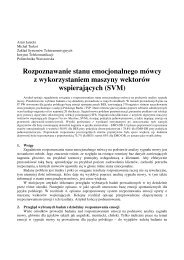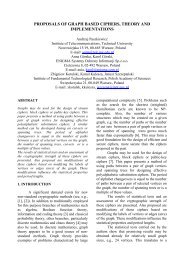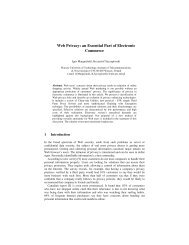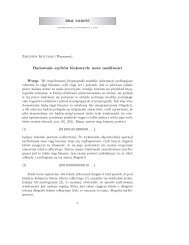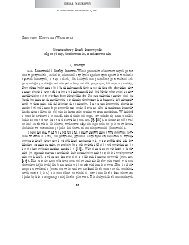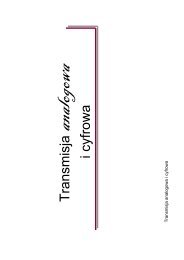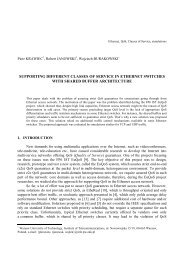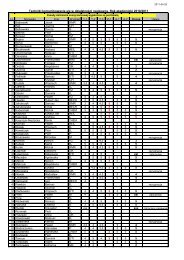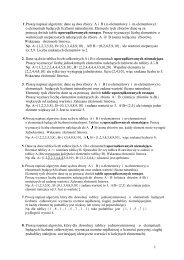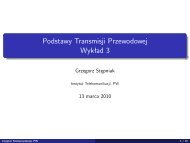MAX II Development Kit Getting Started User Guide
MAX II Development Kit Getting Started User Guide
MAX II Development Kit Getting Started User Guide
You also want an ePaper? Increase the reach of your titles
YUMPU automatically turns print PDFs into web optimized ePapers that Google loves.
<strong>Getting</strong> <strong>Started</strong><br />
■<br />
■<br />
■<br />
Start-up—When the <strong>MAX</strong> <strong>II</strong> device has been successfully<br />
programmed, the Control block automatically accesses a section of<br />
the UFM that prompts an introduction sequence to appear on the<br />
LCD screen. This sequence loops indefinitely until a player presses<br />
the Bet button to begin game play.<br />
Bet Selection—The Bet button provides access to three separate<br />
memory spaces within the UFM, representing the three fixed wager<br />
amounts. Each time the button is pressed, a memory pointer cycles<br />
to the next space in the sequence, displaying the corresponding<br />
wager amount on the LCD screen. The Control block keeps track of<br />
the memory pointer, and thus can cycle through the three wager<br />
values repeatedly.<br />
Spin Engagement—When the Spin button is toggled, the Control<br />
block state machine is sent through a series of actions that affect the<br />
final display of the LCD. First the LFSR is sampled and three<br />
pseudo-random values are generated from its output. Based on the<br />
commonality of these values, a new bankroll total is calculated and<br />
stored internally. This total is then divided into three separate values<br />
that represent the Hundreds, Tens, and Ones place of the number.<br />
These values, along with the LSFR generated values for each reel, are<br />
mapped to 11-bit codes that prompt the LCD to display the correct<br />
number value.<br />
When the values have been calculated and mapped, the Registers block<br />
(see Figure 2–8) is updated with new bankroll and reel values. The block<br />
then uses the MUX function to access the flash memory block (for<br />
simulated spinning action of the reel), and the Register block (to display<br />
the final bankroll and reel values). Upon completion of this process, the<br />
design cycles back to monitor the status of the Bet signal to prepare for<br />
another spin.<br />
LCD Controller<br />
The <strong>MAX</strong> <strong>II</strong> Slot Game Reference Design communicates with the<br />
on-board LCD through a custom-built controller interface. The logic<br />
block performs several functions vital to the game behavior. Upon<br />
successful programming of the device, the block sequentially loads a<br />
series of specific codes that initialize the LCD hardware and configure the<br />
display environment. When initialization is complete, it interprets 11-bit<br />
instructions fed by the design’s Control block, and manages the delivery<br />
of characters to be displayed on the screen. Based on the value of the<br />
11-bit input bus, the controller handles changes to the speed, content, and<br />
direction (read/write) of LCD data.<br />
Altera Corporation <strong>Development</strong> <strong>Kit</strong> Version 1.0.0 2–25<br />
October 2004<br />
<strong>MAX</strong> <strong>II</strong> <strong>Development</strong> <strong>Kit</strong> <strong>Getting</strong> <strong>Started</strong> <strong>User</strong> <strong>Guide</strong>




